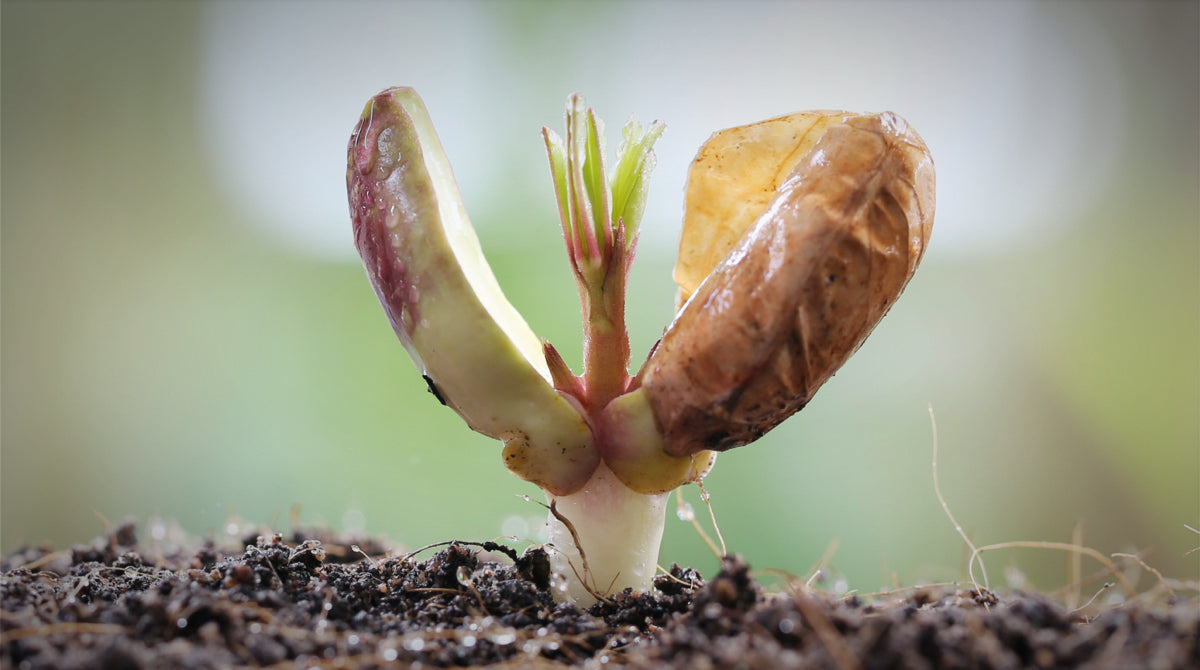Peanut Planting and Growing Season is Here!

Warmer temperatures excite people for many different reasons: from thrilling summer activities to much-needed relaxation. For us, the beginning of summer marks the beginning of the peanut planting and growing season! During the end of April and all throughout May, farmers across the country prepare their soils to plant seeds that will one day grow into beautiful and delicious peanuts. In celebration of the peanut planting and growing season, we’ve put together a handful of facts about planting peanuts and the peanut-growing season.
The Peanut Growth Cycle is Quick
Although different types of peanuts can have varying growth cycle lengths, the average growing cycle of a peanut takes around four to five months.
From planting to harvesting, growing peanuts happens in six main steps. The first seedlings crack the soil at around the 10-day mark after planting. Forty days after planting the seed, yellow flowers appear, indicating the peanut ovaries are forming. The budding ovary turns into a “peg,” which carries the peanut embryo toward the soil. Once pegs penetrate the soil, peanuts grow. After the peanuts have matured, the soil must strike the perfect balance between wet and dry. And finally, in the harvesting stage, peanuts need to be left to cure for about two or three days so they can release excess moisture.
There are Four Types of Peanuts
Yup — there are different types of peanuts that all have unique flavor profiles! These peanuts are all grown across the southern United States and come from the same plant: the Arachis hypogaea. The four primary types of peanuts are the Runner peanut, the Virginia peanut, the Spanish peanut and the Valencia peanut.
- Runner peanuts make up 80 percent of all peanuts grown in the United States and are commonly used in peanut butter because of their size uniformity.
- Virginia peanuts are known as a ballpark favorite, and are preferred by many for snacking due to their extra-large kernels. This peanut is often considered the fanciest of the bunch for its high-quality flavor profile and large size.
- Spanish peanuts have natural oils that make them even more delicious when roasted. It’s easy to spot them in plain sight because of their characteristic red skin. Withits especially nutty profile, it’s often used in candies and sweeter items.
- Valencia peanuts are excellent for boiled peanuts because of their size and thinness. This naturally sweeter peanut family is unique because they have three or more kernels per shell.
Peanuts Don't Grow on Trees
Contrary to popular belief, peanuts do not grow like many of their other legume cousins, such as almonds. Through meticulous planning, farmers plant peanut seeds in nutrient-rich soil groomed year-round to be in perfect condition for a plentiful harvest.
The Weather Matters
Warm weather isn’t the only aspect of a successful peanut planting and growing season. Peanut seeds thrive in moist, warm environments, but the conditions before they are planted are critical. On average, a total of 140 to 150 days of frost-free conditions are required for farmers to have successful peanut crops.
Hampton Farms has been the leading supplier of the freshest, best quality peanuts from seed to shelf since 1917. Our business is family-owned and operated, and we are committed to producing the finest nut-based snacks and services with integrity, honesty and the pride of American farmers. If you're looking for a locally grown, nutritious and delicious snack, purchase some Hampton Farms nuts today!


Leave a comment